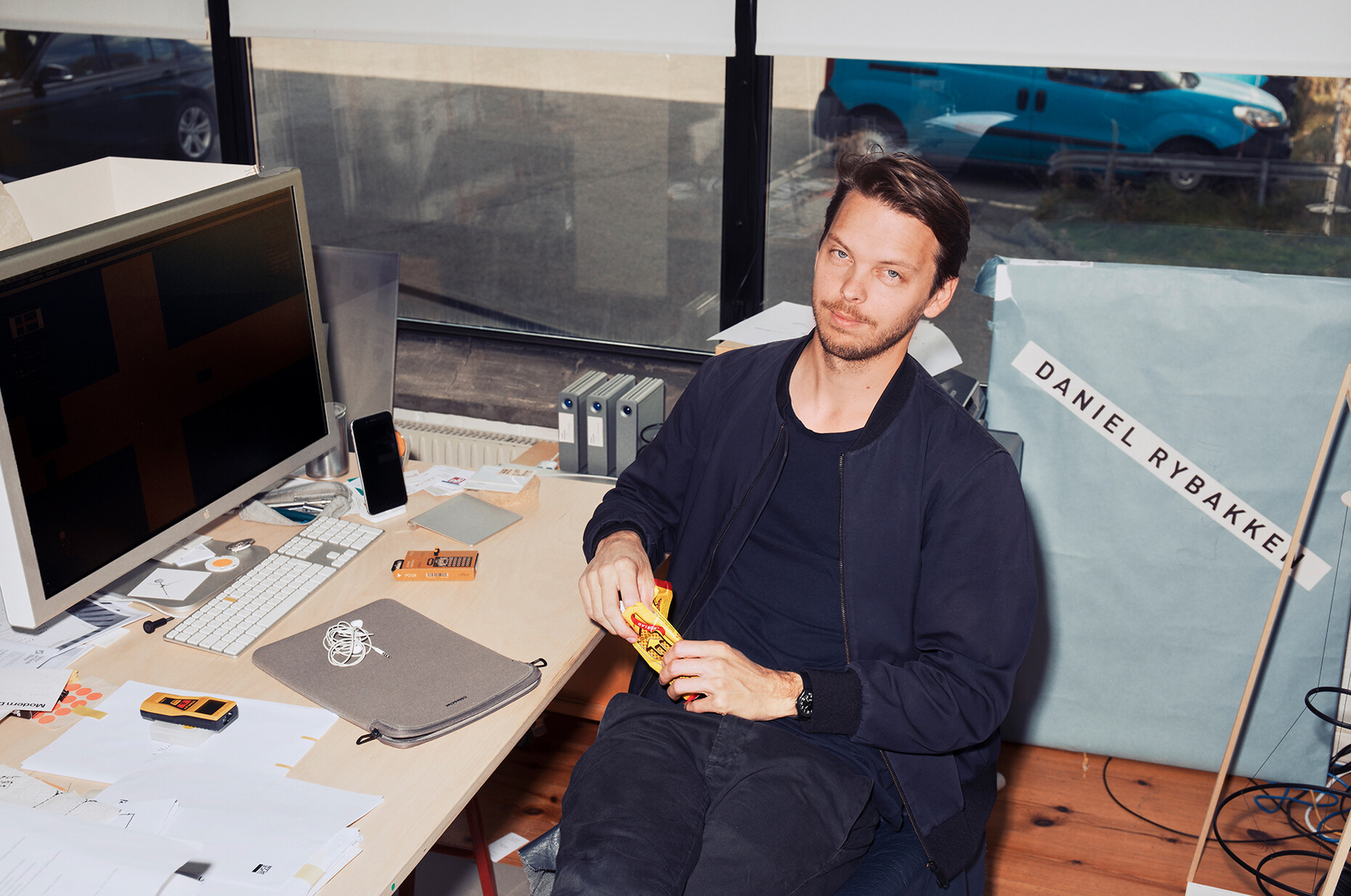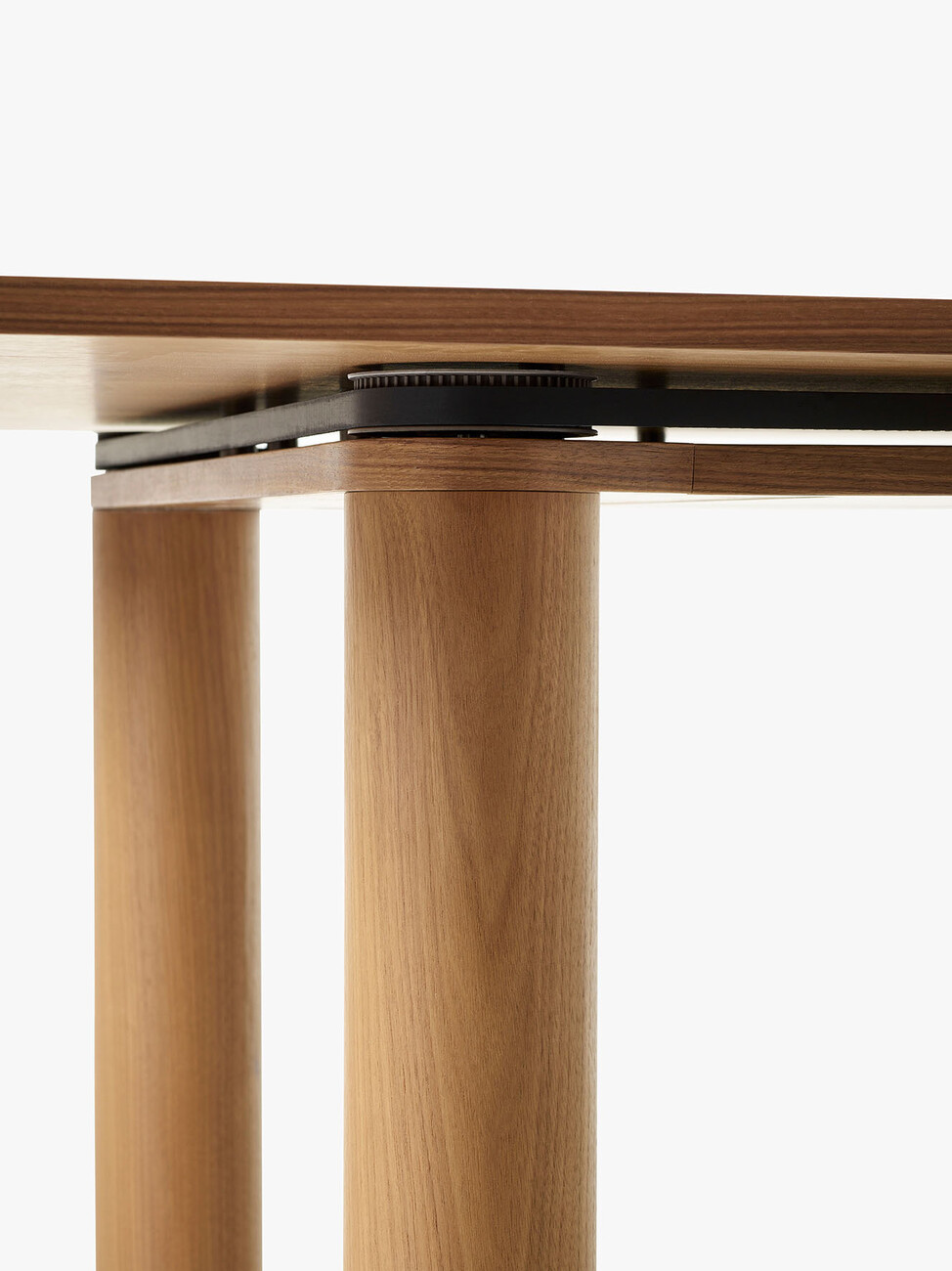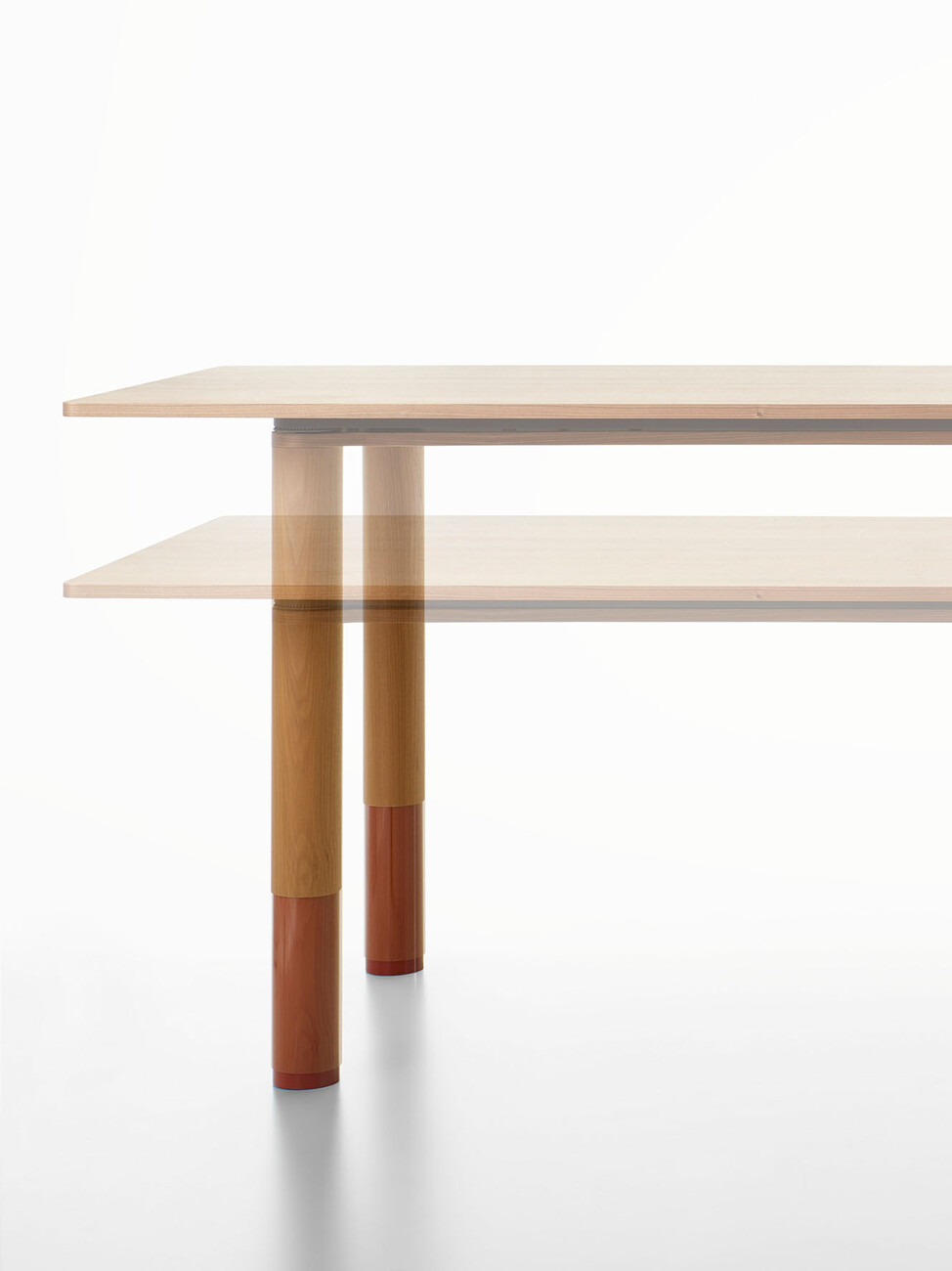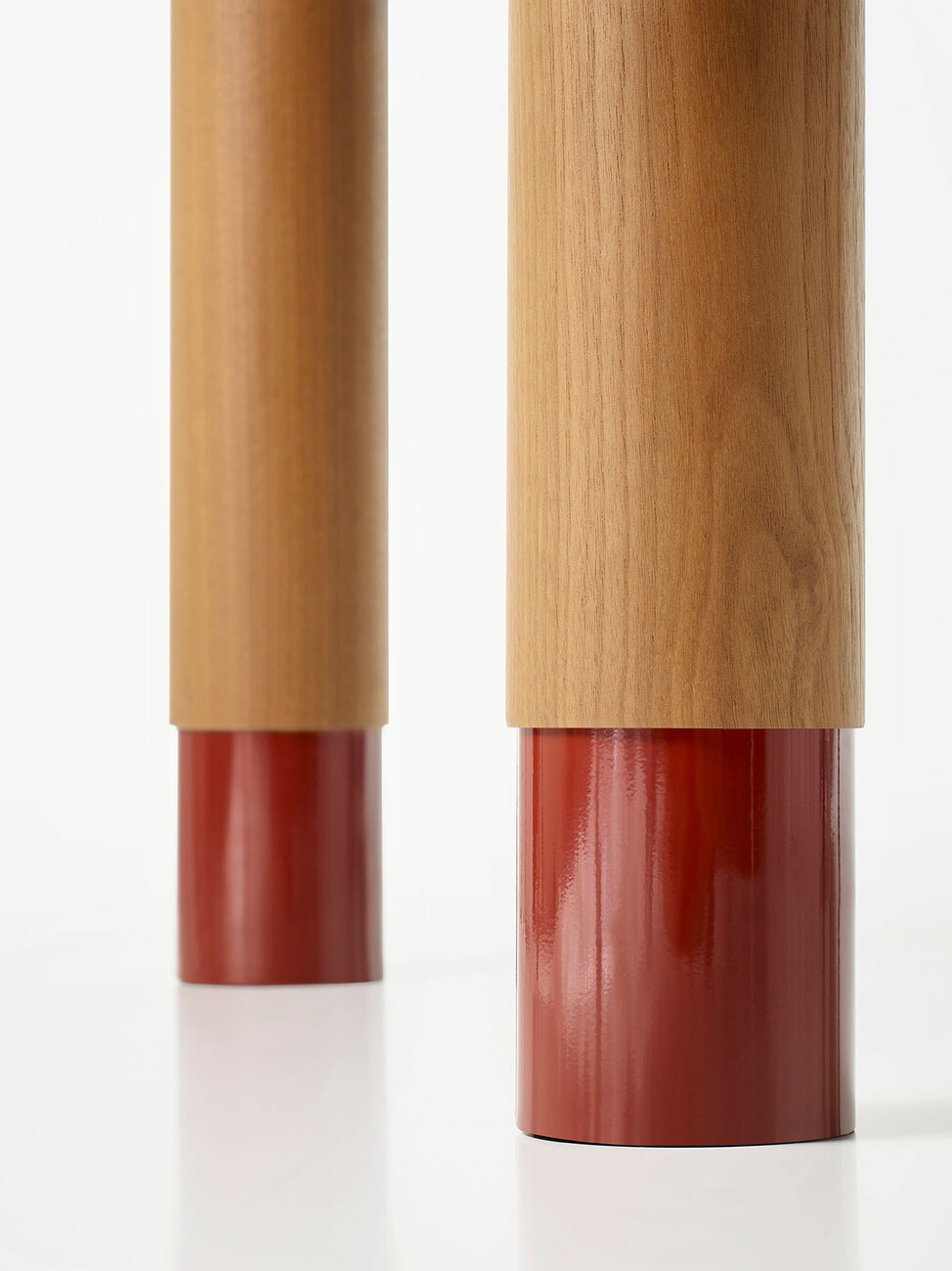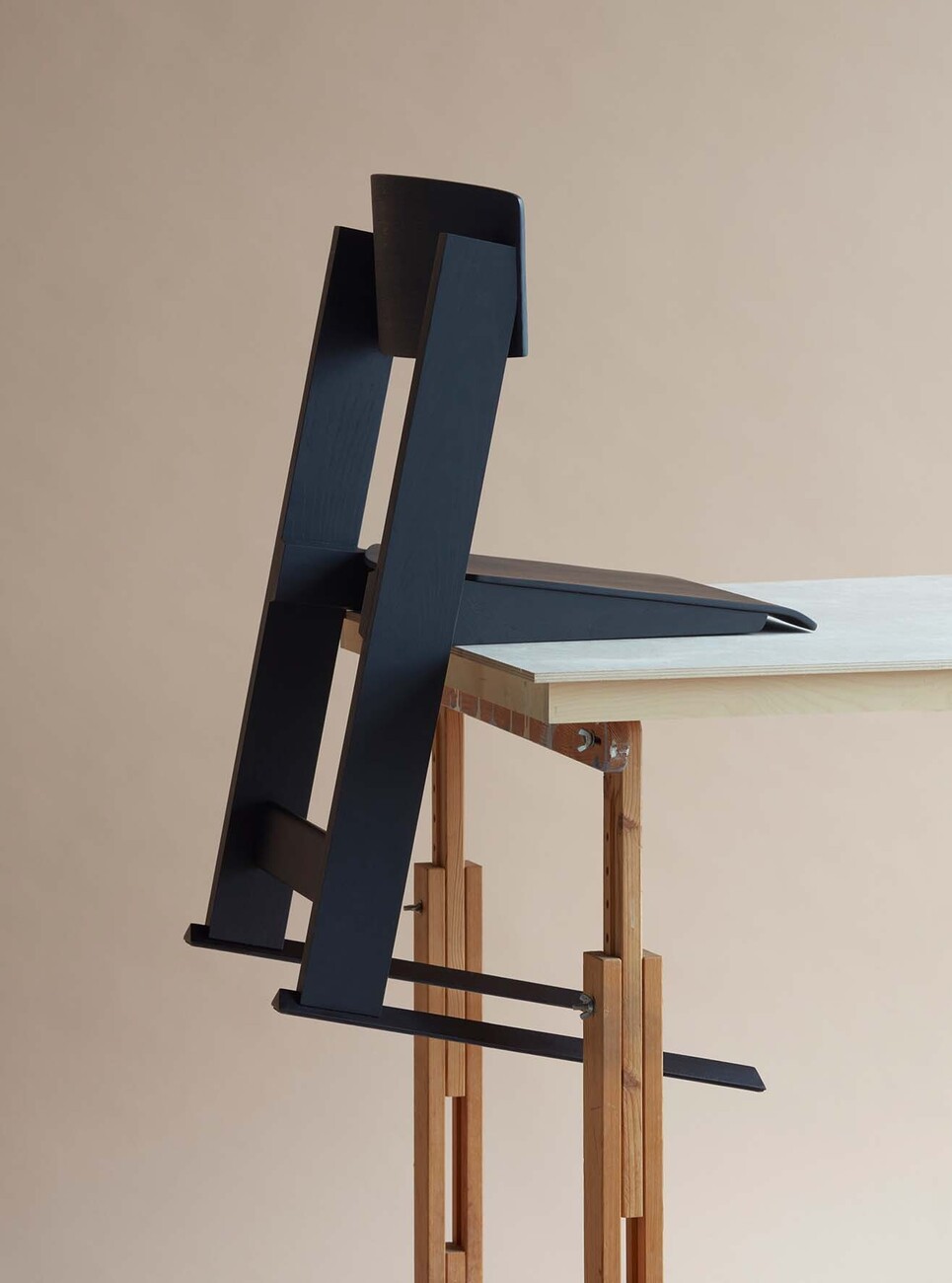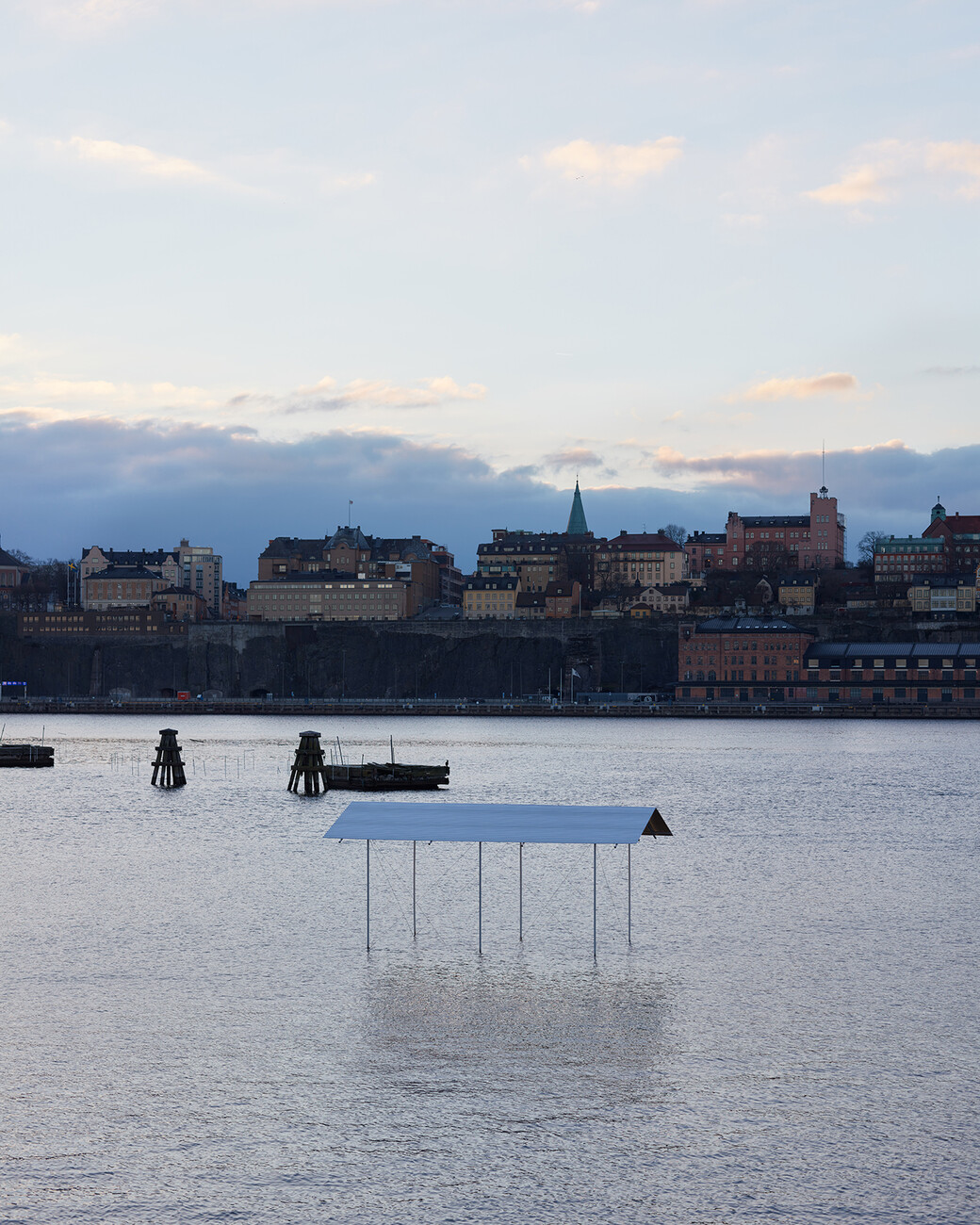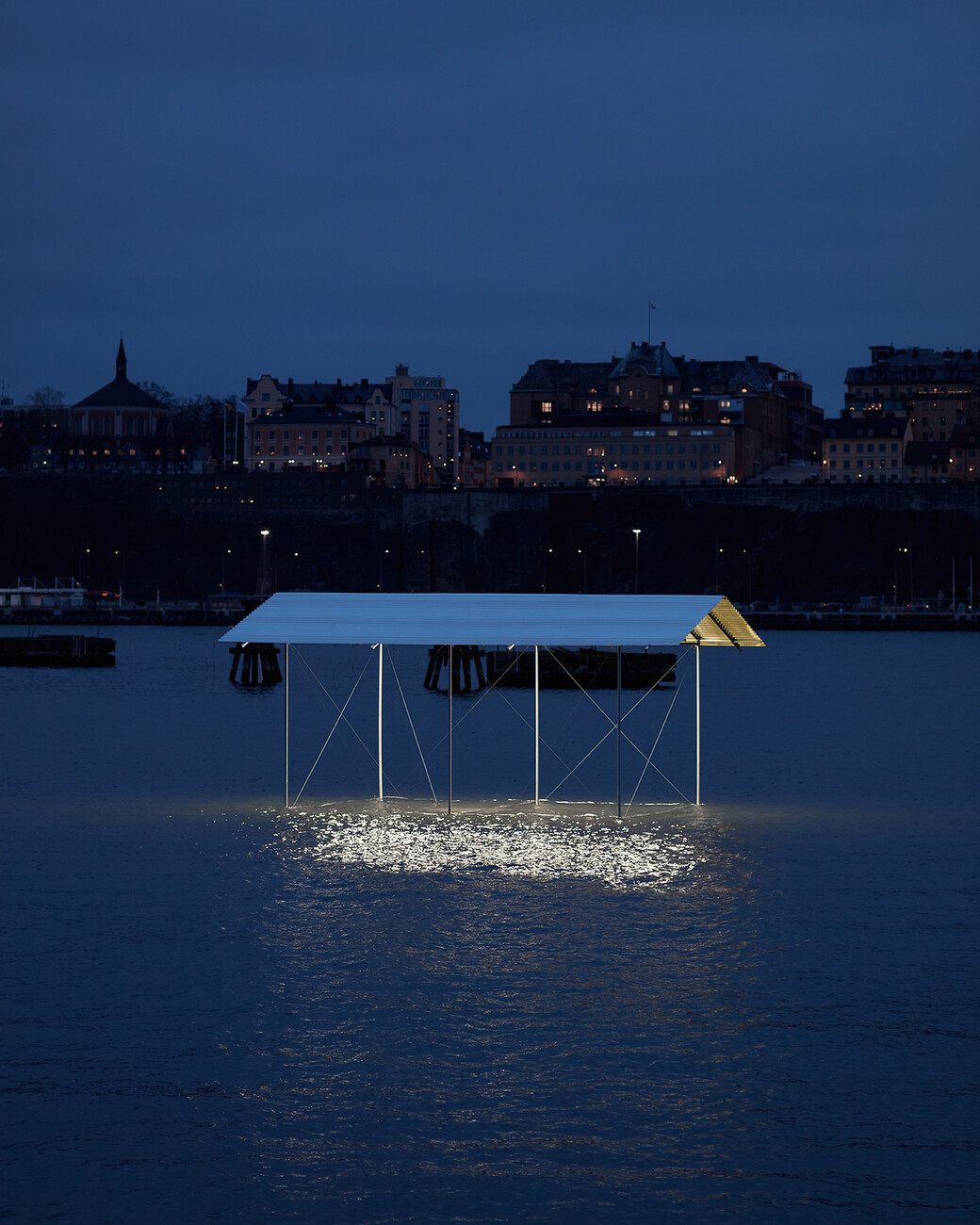The Elegance of Logic
Daniel Rybakken was born in 1984 and grew up in the Norwegian capital Oslo. He studied design at the Oslo School of Architecture and graduated from the School of Arts & Crafts in Gothenburg, Sweden. After completing his Master of Fine Arts in 2008, he opened his own design studios in Oslo and Gothenburg.
Elisabeth Bohnet: You are a very established designer and work with important brands. Looking back, in 2014, you received the Compasso d'Oro for "Counterbalance" with Luceplan. What did this very early and heavy success mean for your career?
Daniel Rybakken: I don't want to say I was blessed, but I've been lucky to receive a lot of big awards from very early on. A lot of these awards paid very well, which meant that I could early start a studio, where I didn't have to just focus on doing big sellers. I love that my projects are self-initiated and that I take on the compositor role. There's no money involved in the Compasso d’Oro. I did "Counterbalance" self-initiated here in my studio in Gothenburg. After presenting it in Milan, it was picked up by Luceplan. This was proof, that my approach works, and I became maybe less dependent on having briefs from companies and it gave me a lot of freedom to focus on my ideas and confidence that it works out.
Two years later, you were honoured again for "Ascent".
Daniel Rybakken: It was the same process: I had the idea, and Luceplan wanted to produce it. Until today, this is the way we work together.
During that time, you seem to have focused a lot on luminaires and lighting design. What interests you in designing light?
Daniel Rybakken: At the beginning, designing was such an open field. When you work with furniture, for example on a chair, there are so many preconceptions of how things should look. But a luminaire can be anything, you are very free in designing it. At the same time, I didn't see myself as a luminaire designer, all the other people saw me as that. I was approached by different companies, but only to design lamps. I had to break free on my own with the furniture pieces and it slowly become a bigger part of what I do.
What where the pieces to break free with?
Daniel Rybakken: Probably the "Petit Standard" chair with Hay. It was a very long process, taking eight years from the first sketch into production. It is also a quite complicated piece, and it needed the right company for it to work. Also, I was approached by Marianne Goebl from Artek, which was a big surprise for me because she just launched a beautiful collection. They could have worked with anyone at that point, but they chose me, who was in my feeling the only Scandinavian designer that didn't work with wood and didn't come from that carpentry background at that time – a very nice surprise and a great opportunity.
Your interior products show a broad variety and a clear design language. What does attract your interest in a new project?
Daniel Rybakken: As most of my designs are self-initiated, the projects really come from me and are based on my own interests and ideas. Yet right now I'm starting to work with a very small company in Portugal to do a wood stove. In that case, they approached me and asked if I wanted to do something with them. I do not know, how profitable it will be. But I saw that they have done very unique stuff and that there is a potential to do something innovative here. I love the opportunity to do something new. That's what's interesting for me. Maybe it is my personal challenge, that derives from teachers saying that everything has been done before. I think there's a value in trying to do something outside the norm. Therefore, I try to get as little inspiration as possible from the design field.
Let's talk about your latest pieces. For example, you designed a chair and lamps for Karimoku, made of Japanese Hinoki softwood. What was special about this project?
Daniel Rybakken: I liked the contrasts. That was also a self-initiated project where I was thinking about doing furniture out of soft wood instead traditional hard woods. With the hard woods, you can do very elegant chairs because you can decrease the dimensions, they can be very small and delicate. I was thinking, "How can you achieve something that still feels elegant but with the larger dimensions that are needed when using softwood?" That was the approach to do something very utilitarian, that could last for hundred years. Very strong, overengineered, or over-dimensioned but at the same time have an elegance. That was the initial idea. Then I presented it to Karimoku and as chance would have it, they said, they just started a new sub-brand that focuses on Japanese softwood called MAS.
In this year's Salone, you presented two products with Alias. What is the design idea behind the "Nastro" table?
Daniel Rybakken: My idea came in 2020, when people increasingly started to work from home. You were seeing people moving their offices home, and most of the working desks have this ugly industrial look. Even if you put a nice wooden plywood on top, they still communicate office and nothing domestic. That's mainly because they have two legs instead of four. I wanted to create a height-adjustable table and asked myself: "How can you do it with four legs and do it very elegantly?" The challenge was to synchronize the movement of four individual legs. My children's bikes came into my mind, using timing belts instead of a chain, which are completely dry and without lubricant, dust, or metals. It was a simple way of connecting the legs and not having to use an electric motor. Then I built my own prototypes, I bought a welding machine, learned to weld, and put it together as proof of concept. The nice thing about it is that it could be used anywhere, in the kitchen, for instance, there it's not only for working and dining but you can do your baking, for which you want the same height as the countertop.
Then you approached Alias?
Daniel Rybakken: Yes, and they really liked it. Things went really quickly, and it just took one year until it was launched, also with the chair.
You are talking about the "Lira" chair, that you said you are very proud of. Can you explain why?
Daniel Rybakken: Maybe I am happier with it than proud of it because chairs are very difficult to do, compared to a table. In the table you can say there's all this mechanical complexity to it – or simplicity as I prefer it to be viewed. If you'd widen the table by ten centimetres, or make it longer by twenty centimetres, or change the thickness of the top, it doesn't really affect it that much. It's more of an architectural element. A chair is much more of a living creature. It's such a demanding process to do and you get tired because you realize that in everyday life you don't think that much about chairs. But when I am working on a chair like that, there are some internal rules of how I want it to be done and this helped me. There are such a lot of different angles and different radiuses.
It's like in a system, I imagine if you change one thing, you must change everything.
Daniel Rybakken: Exactly. The first model that I did was just one side of the chair. I need to do proofs of concept because it is necessary for many companies. I like that "Lira" works that well and is as comfortable as it is.
Why did you choose metal feet?
Daniel Rybakken: I like the contrast between the two materials. My father is a graphic designer. He talked to me when I was a child. I remember him saying that if you have a car that's very organic, like a piece of soap if you add sharper elements to that, it will highlight the curvature instead of just having everything being very round and fluid. The vertical pillar is like a canvas showing the grains of the wood. The Metal legs are a way of highlighting the vertical piece of wood by having everything else being quite thin and minimal.
In 2020 you made an art installation in Stockholm called the "Shelter". Its shape reminds me of your luminaire "Fienile". What is the relationship between art and design in your perception?
Daniel Rybakken: For me, it's very fluid. The "Shelter" project is moving towards art, but "Fienile" is more about accessibility. I see that my most traditional lamps are the ones that sell the most – unfortunately, since I really enjoy doing more conceptual work. And the more conceptual it gets, the more often it becomes an art project. Before "Shelter", I did several other installations as in 2010, I did a project in Stockholm called "Daylight Entrance". I was using the illusion of natural light, of daylight coming into the building. It was a staircase and light patches that seem to be thrown on the wall by the sun falling through a window, were all done with LEDs placed within the surface. Another one was "Layers" in Paris, a light installation in front of the Swedish Institute in 2012.
I heard you say, "elegance is the logic of how things are put together and to show it in a clear way". I liked the idea of the logic of movement as elegance, and it is clearly an attribute in your design. What are other attributes you pursue?
Daniel Rybakken: I also am trying to have an innovative element, something that shows a new approach. I've heard that a lot of my pieces have a dynamic element to them, not all of them, but a mechanical movement like the "Counterbalance". It's a very simple movement and I like to show that part rather than hiding it away.
Perhaps also to offer something of an analogue nature?
Daniel Rybakken: Yes, because we don't really understand how things work anymore, as it is all hidden away from us. The "Nastro" table is very easy to understand, I think that's why people like it so much. It is something so obvious, but it hasn't been done before.
And by using it, you see the result of your action right away. I think you can interact with the piece.
Daniel Rybakken: I think that the future luxury will be mechanical dials and movement, like in the car when everything is getting you tricked into thinking that this is very high-tech and cool with a touchscreen. In fact, it's just a way to make things cheaper. On my new stove and my energy isogram I insisted on having mechanical knobs and buttons, also because they are so much better to handle.
We already talked about one upcoming project, the stove. What else is in store for the near future?
Daniel Rybakken: I'm doing a lot for Luceplan, like a new collection, and I'm doing some new work for Alias. There are also some interesting projects, that will be shown on the Salone del Mobile next year. I am working alone in my studio with my assistant and sometimes thinking whether I should increase it or not. But I want to stay in control over my projects and I like honesty: if it says, "designed by Daniel Rybakken", it shouldn't be designed by any assistant but only by myself.
